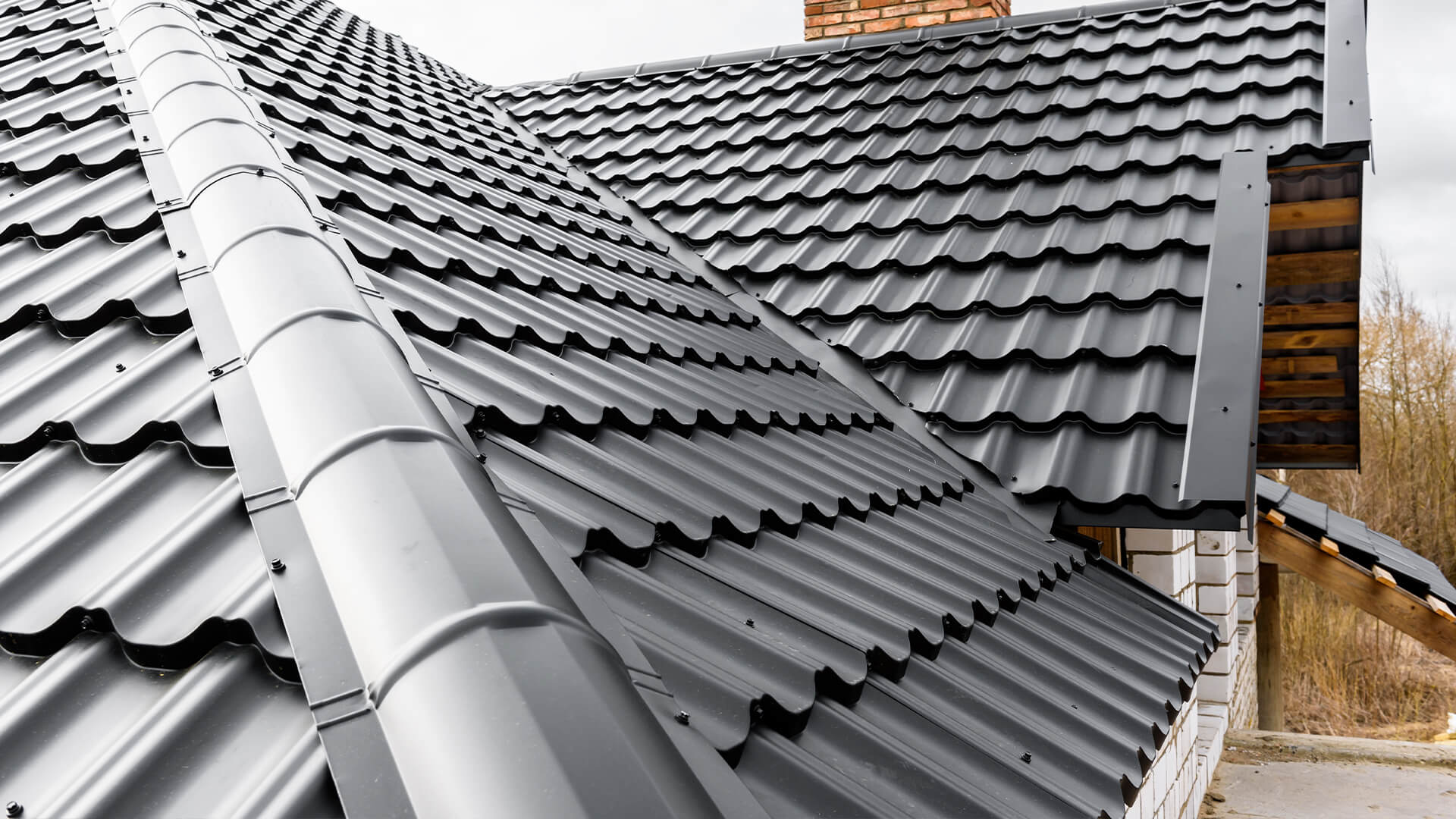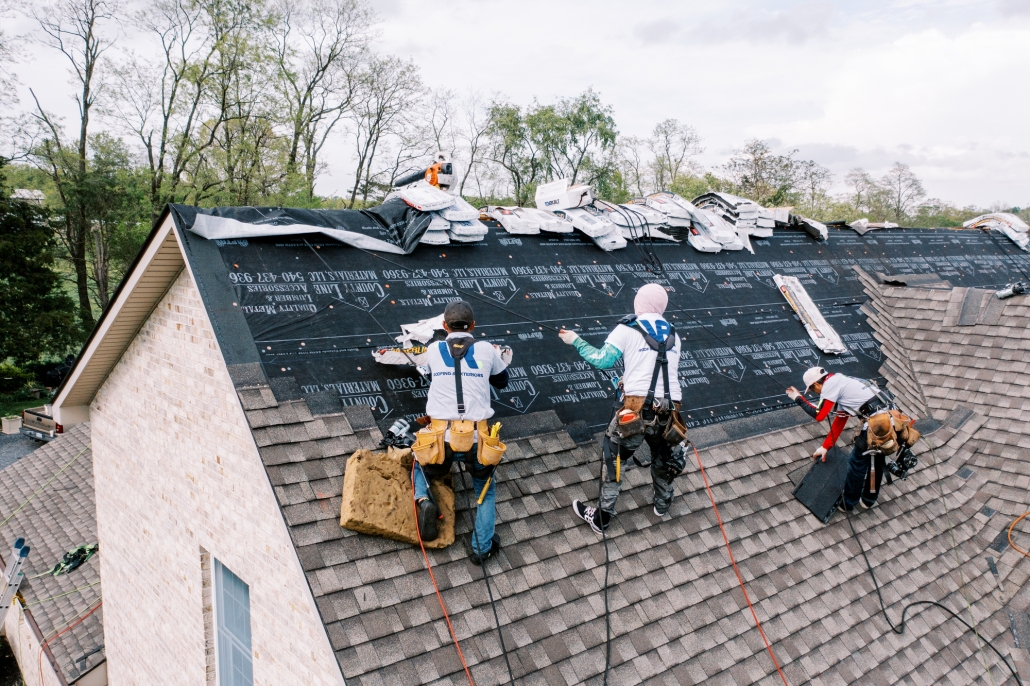The Benefits of Working with Gainesville FL Roofing Companies
The Benefits of Working with Gainesville FL Roofing Companies
Blog Article
Ideal Practices for Ensuring Correct Roof Covering Air Flow
Making sure correct roof covering ventilation is critical for the longevity and efficiency of a roofing system. A well balanced intake and exhaust vent ratio, typically 1:300, plays a crucial role, with intake vents ideally put at the lower edge of the roof for amazing air entry and exhaust vents at the peak for warm air leave. Normal examinations to recognize blockages and preserve clear air movement are critical. Furthermore, maintaining insulation far from vents is critical to avoid airflow restriction. Recognizing these fundamental components establishes the stage for even more comprehensive understandings into installation and maintenance techniques that can substantially improve your roof's efficiency.
Understand Air Flow Essentials
Correctly understanding air flow basics is necessary for ensuring the durability and performance of roof. Reliable ventilation alleviates dampness build-up and temperature extremes in the attic room, both of which can bring about significant architectural damages over time. A well-ventilated roofing system assists in preventing typical issues such as mold development, wood rot, and ice dams, which can compromise the integrity of the roof materials and the underlying frameworks.
The main goal of air flow is to promote the movement of air, enabling a regular exchange in between the outside and interior settings. This equilibrium is achieved with a combination of intake and exhaust vents that function together to preserve optimal air movement. Consumption vents, normally situated along the soffits or eaves, enable fresh air to go into the attic room area, while exhaust vents, frequently situated at or near the roof covering ridge, enable warm, damp air to get away.
Secret factors influencing the performance of roofing system ventilation include proper positioning, ample sizing, and making sure that both consumption and exhaust vents are unblocked. Regular inspection and maintenance are important to identify prospective obstructions, damage, or inadequacies in the air flow system, therefore safeguarding the roof covering's efficiency and toughness.
Kinds Of Roof Covering Vents
Roofing system vents play an essential duty in preserving reliable attic ventilation and, by extension, the overall health and wellness of the roof. Different kinds of roof vents are offered, each with special benefits customized to certain roofing needs. Ridge vents, as an example, are set up along the roof's peak, enabling warm, moist air to run away from the attic room. They provide constant ventilation and blend perfectly with the roofline, making them both efficient and aesthetically pleasing.

Soffit vents are set up under the eaves and work in tandem with roofing vents to make certain a well balanced consumption and exhaust system. By allowing cooler air to enter from below, soffit vents promote the expulsion of warm air via top vents. Gable vents, located on the outside wall surfaces of the attic room, deal an additional efficient remedy, especially in homes with gable roofs.
Analyze Your Current Air Flow

Next, take into consideration the age and condition of your roof covering materials and ventilation elements. Older systems might not adhere to present structure codes or may have worn away over time, minimizing their efficiency. Conduct a comprehensive assessment to determine any kind of signs of damage, such as rust, damage, or gaps that can endanger the system's performance.
Furthermore, measure the attic temperature level and humidity degrees. Heats and humidity can suggest poor air flow - gainesville fl roofing companies. Use a hygrometer and thermometer to acquire exact readings, contrasting them with outside problems. Relentless inconsistencies recommend potential problems that need attending to.
Setup Best Practices
Efficient installation of roof covering air flow systems is extremely important for making sure optimum performance and long life. Correct installation starts with understanding the particular ventilation needs of the building and the roofing it covers. This involves determining the proper proportion of consumption to wear down vents, typically adhering to the 1:300 guideline, which states one square foot of ventilation for each 300 square feet of attic room flooring room.

The placement of vents is equally crucial. Intake vents should be mounted at the roofing's lower edge, usually in the soffits, to allow awesome air to enter. Exhaust vents, on the other hand, ought to be set up near or at the roofing system's peak to facilitate the departure of warm, wet air. This develops an all-natural airflow that assists keep temperature level and dampness balance within the attic room space.
Seal all vent links thoroughly to prevent air leaks and potential water seepage. Usage top quality materials and comply with maker standards to make sure toughness and efficiency. Additionally, incorporating ridge vents with baffles can dramatically improve air flow effectiveness by avoiding wind-driven rain and snow from getting in the attic room.
Ultimately, accurate installation of roofing air flow systems mitigates potential issues such as mold and mildew growth, ice dams, and architectural damages, making certain the roofing system's stability and the building's overall wellness.
Routine Upkeep Tips
Uniformity in maintenance methods is essential to ensuring the lasting effectiveness of roof air flow systems. Routine assessments are important, ideally carried have a peek at this website out biannually-- in the spring and fall. Throughout these inspections, make certain that vents are complimentary of debris, nests, and various other blockages that could hinder air flow. Look for any kind of indicators of wetness buildup or mold, as these can suggest incorrect air flow or leaks (gainesville roofing companies).
Cleaning up the vents is one more necessary job. Use a soft brush or a vacuum to remove dust and debris from consumption and exhaust vents. Beware not to harm the air vent displays or louvers throughout the procedure. Additionally, examine the attic room for any kind of signs of water damage, which can jeopardize the honesty of the roof.
Appropriate insulation is equally important. Ensure that attic insulation does not block the vents, as this can drastically limit air movement. If any type of insulation has moved or worked out, reposition or change it to keep a reliable barrier.
Lastly, replace any harmed or missing parts promptly. Broken vents, split roof shingles, or shabby blinking can all add to poor air flow and must be attended to right away. Normal maintenance ensures that the roofing air flow system works ideally, consequently extending the life-span of the roofing system itself.
Verdict
Making sure appropriate roof covering ventilation is vital for preserving the efficiency and resilience of a roof covering system. Adherence to the 1:300 have a peek at this website intake and exhaust air vent ratio, coupled with the critical placement of vents, is necessary.
A well balanced intake and exhaust air vent ratio, generally 1:300, plays a crucial function, with consumption vents ideally placed at the reduced side of the roofing for cool air entry and exhaust vents at the optimal for warm air exit. Intake vents, generally located along the soffits or eaves, permit fresh air to enter the attic space, while exhaust vents, usually positioned at or near the roofing ridge, allow warm, moist air to escape.
Soffit vents are click for info set up under the eaves and job in tandem with roofing system vents to make sure a well balanced intake and exhaust system. By permitting cooler air to go into from below, soffit vents facilitate the expulsion of warm air with upper vents. Adherence to the 1:300 consumption and exhaust vent ratio, combined with the calculated positioning of vents, is crucial.
Report this page